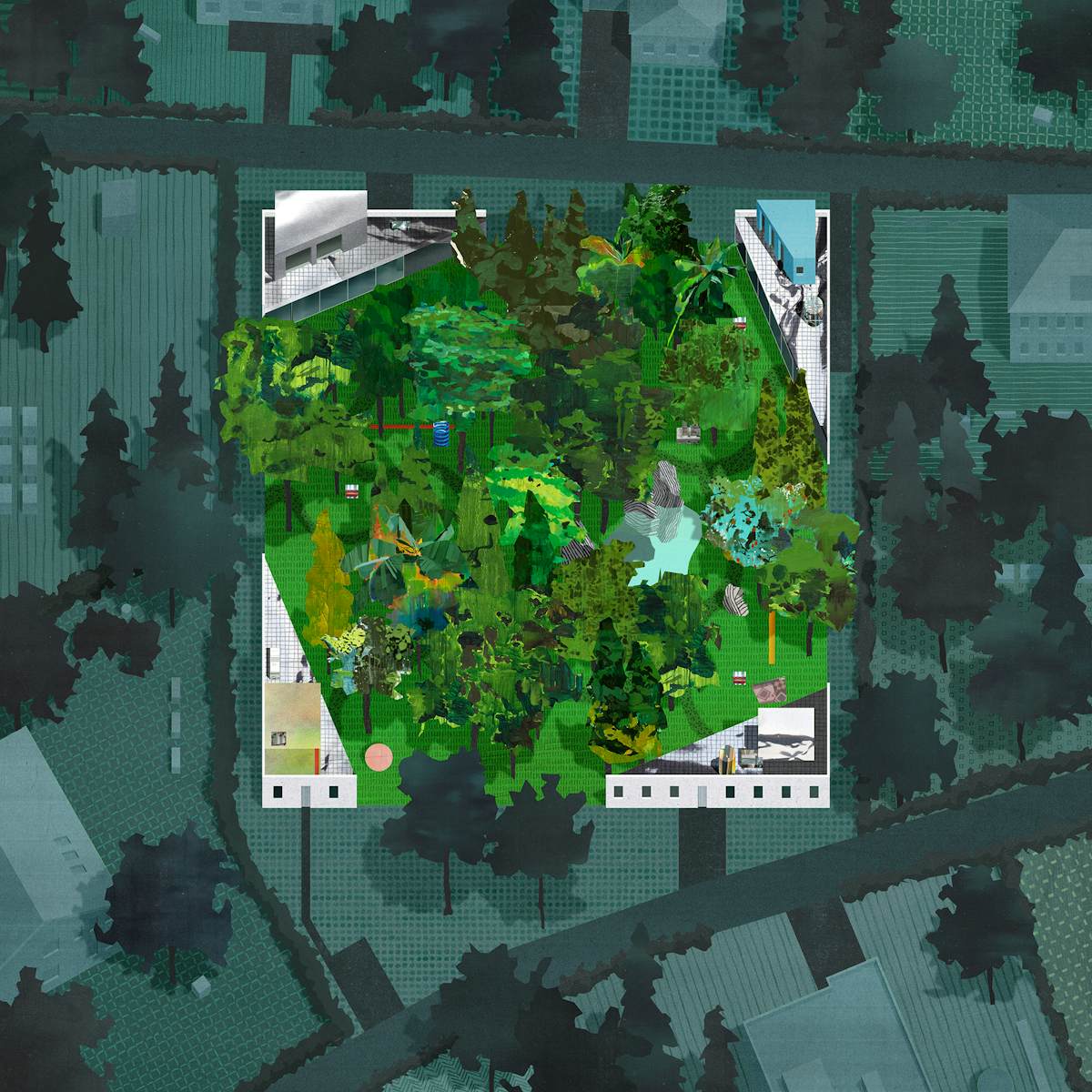Undoubtedly, the individualised suburban houses make up for a substantial portion of the built environment in the Flemish landscape. This sprawl of suburban houses are the context for which the subjectivity, the way of thinking, propagates. The subjectivity of individualism, accumulation and ownership. This is resultant from the logic of plot sub- divisions within the Flemish territory that has a pronounced emphasis on the building of individual single family homes. Over time, this has resulted in the sense of individual ownership being induced as the general mentality of the populace.
The suburban house is simultaneously both the context for and the physical manifestation of a self-constructed fantasy of the inhabitant. It is the domain of self-isolation, a space of inward retreat for the individual. At the same time, the house is also an affirmation of the narrative of self-made success, having accumulated enough resources to possess and own property. Where the narrative of individualised success is emphasised, the role of collectivity is diminished. This developing into a trend towards increased social alienation, each retreating into his/her private bubble, admonishing the reality of connectivity in between each of these individuals.
Beyond just simply being the locus and embodiment of Flemish subjectivity, the suburbia is the intermediary between the rural and high-density urban forms of development. It is the setting for where people both young and old settle in search of the good life.
While supposedly an idyllic environment for the Covid-19 lockdown due to the suburban house’s isolating tendencies, this period of lockdown has made explicit the role of the suburban house in the deprivation of tactile social interactions beyond it. Akin to something out of a production from David Lynch, the quotidian life becomes the set of an an- guished existence, a familiar horror. Thus, it has also brought to greater recognition that social interaction and human connectivity beyond our own domestic confinements are indeed fundamental aspects of the way we order our spaces, and thus our lives lived.
As such, this calls into question the role of borders within the Flemish suburbia. Plot demarcations are the primary device used within the Flemish landscape to subdivide the land and enforce the built logic of the individual suburban house, thus, advertently prescribing the aforementioned manner of living. To address a growing need against social isolation, boundary implementations(or lack thereof) and resource organisation in the Flemish landscape need to correspond accordingly.
In opposition to the current built logic enforced by existing plotlines, domestic typologies have the potential to reconstitute and reorganise the territory. Individual suburban plots, when coordinated with a coherent typological vision, can combine together to challenge pre-established boundaries. Domesticity has the potential to become almost akin to an infrastructure of sorts for how space is managed within the territory, elevating its role from mere byproduct of market forces and regulatory requirements into the primary appa- ratus to reappropriate the land. When organised collectively, the humble suburban plot can achieve great impact.
Generiek
www.generiek.eu
